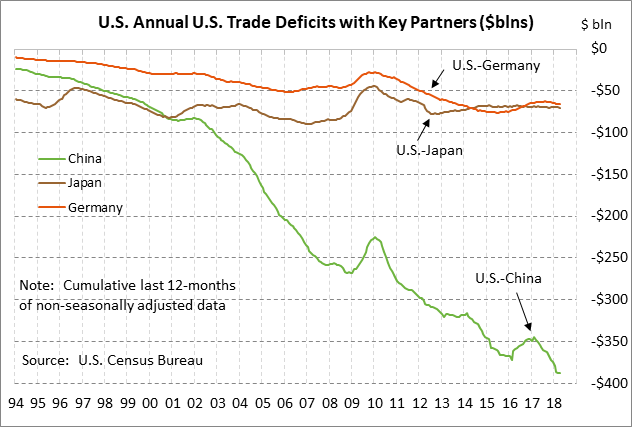- U.S. labor market expected to show continued tightness
- U.S. trade deficit expected to narrow
U.S. labor market expected to show continued tightness — Today’s June unemployment report is expected to show continued strength in the U.S. labor market, which will keep the Fed on its current course of steady rate hikes. However, if today’s unemployment rate drops another notch or if wages pick up significantly, then the chances will grow that the Fed in December will execute its fourth rate hike of the year.
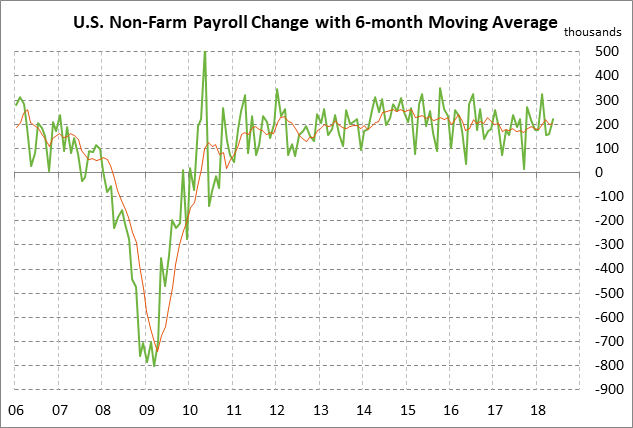
The market consensus is for today’s June payroll report to show a solid increase of +195,000. That would be down from May’s increase of +223,000 but would be very close to the 12-month trend average of +197,000.
The U.S. economy continues to be a job-creating machine despite the fact that qualified employees are becoming harder to find. The U.S. economy has created 18.9 million jobs (+15%) since the post-recession jobs trough in February 2010. Despite all those jobs, the labor force participation rate is at only 62.7%, which means there are still many people who are no longer participating in the job market. Some of those people, however, might be coaxed back into the job market if wages start to rise, which means the Fed has somewhat of a buffer on the labor market.

The consensus is for today’s June unemployment rate to remain unchanged from May 48-year low of 3.8%. The unemployment rate is currently at its lowest level since 1969. The Fed is forecasting that the unemployment rate will fall even farther, i.e., to 3.6% by late this year and then to 3.5% in 2019-2020.
The current unemployment rate of 3.8% and the Fed’s forecast for an even lower unemployment rate of 3.5% in 2019-2020 is far below the Fed’s view that the longer-run natural rate of unemployment is much higher at 4.5%. The Fed is thus expecting the U.S. labor market to run hot for at least the next several years, assuming there are no intervening disasters.
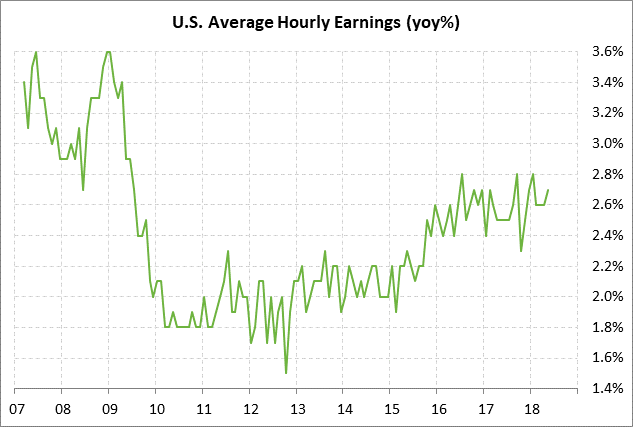
Despite the tight labor market, wages have yet to show an upside breakout. Hourly earnings in May showed an increase of +2.7% y/y, which was 0.1 point below January’s 9-year high of 2.8%. Yet wages are almost certain to move higher in coming months as businesses have a harder time finding new employees and retaining their current employees, thus forcing them to raise wages. Higher wages would cause some inflation concerns for the Fed, but would be very positive for supporting consumer confidence and spending and extending the longevity of the economic expansion.
U.S. trade deficit expected to narrow — The market consensus is for today’s May trade deficit to narrow to -$43.7 billion from April’s -46.2 billion. Today’s trade deficit is expected to be modestly below the 12-month trend average of -$47.8 billion.
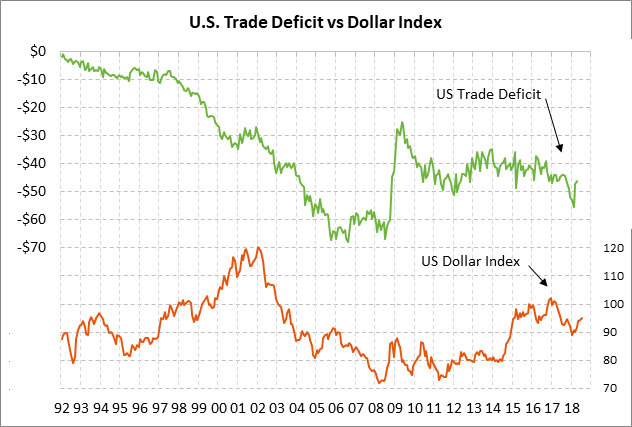
The good news for the U.S. trade deficit is that U.S. exports in April rose to a new record high of $211.2 billion and were up by +9.9% y/y. However, imports in April remained strong as well at +8.0% y/y, thus keeping the trade deficit wide.
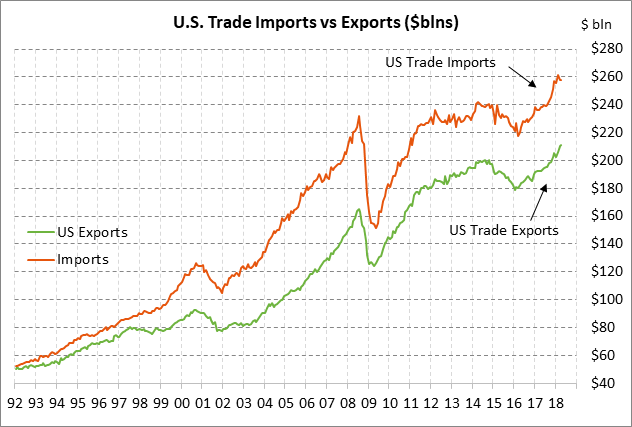
The trade deficit is still seeing some benefit from the 15% depreciation of the dollar index seen from 2017 through early 2018, which made U.S. exports cheaper and U.S. imports more expensive. However, the dollar index has rallied sharply by +7.7% in the past four months to a 1-year high, which will take some of the shine off exports going forward.
Looking ahead, the U.S. trade deficit is likely to be volatile in coming months due to the U.S. trade war, which will shake up trade flows. Buyers are boosting their purchases of goods before tariffs take effect but will then be cutting their purchases after the tariffs take effect. The tariffs are likely to have a mixed overall effect on the trade deficit since U.S. tariffs so far have been met with roughly equal retaliatory tariffs.

